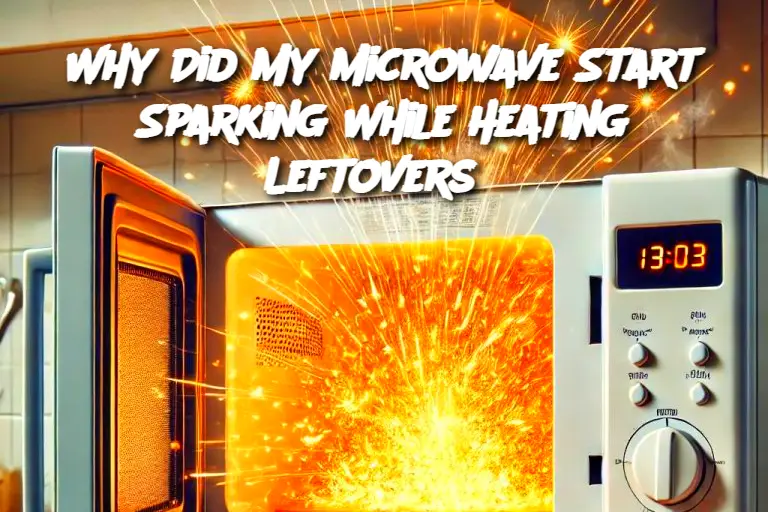ADVERTISEMENT
Introduction
We’ve all been there: you're reheating last night’s pizza or a bowl of leftover stew when—zap!—your microwave suddenly starts sparking. Before you panic or start shopping for a new appliance, it’s important to understand why this happens and how to prevent it. In this article, we’ll break down the science behind microwave sparks, share top cleaning hacks to keep your unit safe and efficient, and offer key kitchen safety tips to avoid disasters.
Microwave safety is crucial in every kitchen, and proper maintenance not only extends the life of your appliance but also ensures your meals are heated evenly and safely. Let’s start by decoding why your microwave might be staging a mini fireworks show.
Ingredients: (or rather, what causes the sparks)
Here are the most common culprits behind a sparking microwave:
Leftover food particles: Dried food splatters, especially those containing oils or sugars, can cause arcing (sparks).
Metallic objects: Accidentally leaving a spoon, aluminum foil, or even some decorative trim on plates can trigger sparks.
Damaged waveguide cover: This plastic or mica cover can degrade over time, especially if food debris builds up on it.
Faulty rack supports: If your microwave has metal rack supports or a metal shelf, and they’re damaged or improperly used, they can arc.
Overused or damaged containers: Cracks or burnt spots in plastic containers can lead to unsafe heating and sparking.
Preparation: Cleaning Hacks to Prevent Sparking
Maintaining a clean and spark-free microwave is easier than you think. Try these proven cleaning methods:
Steam Clean with Vinegar
Mix 1 cup of water with 2 tablespoons of white vinegar in a microwave-safe bowl.
Microwave on high for 5 minutes. Let it sit for 2 more minutes.
Carefully remove the bowl and wipe the interior with a damp cloth.
Baking Soda Scrub
Make a paste with baking soda and water.
Apply it to stubborn splatters, let it sit for 10 minutes, then scrub with a sponge.
Lemon Freshness
Cut a lemon in half, place in a bowl with water, and microwave for 3–5 minutes.
The steam loosens grime, and the lemon helps eliminate odors.
Clean the Waveguide Cover (carefully)
If accessible, gently clean it with a dry cloth.
If it’s greasy or damaged, consider replacing it—most are inexpensive and easy to install.
Serving and Storage Tips: Microwave-Safe Best Practices
Use microwave-safe containers only—look for labels or symbols on the bottom.
Avoid metallic-trimmed dishes or foil.
Cover food with a microwave-safe lid or paper towel to prevent splatters.
Stir and check food halfway through heating to ensure even distribution.
Let food stand for a minute or two after microwaving; it continues to cook as heat distributes.
Variation: Going Beyond Leftovers
ADVERTISEMENT
